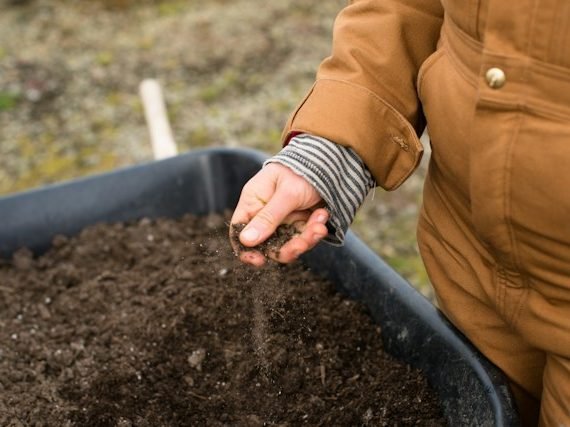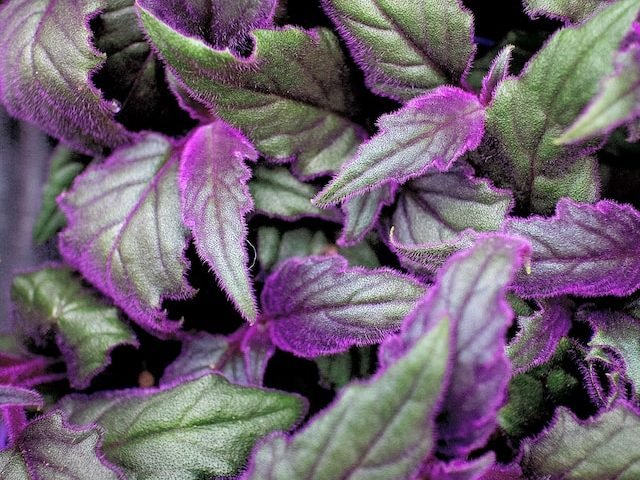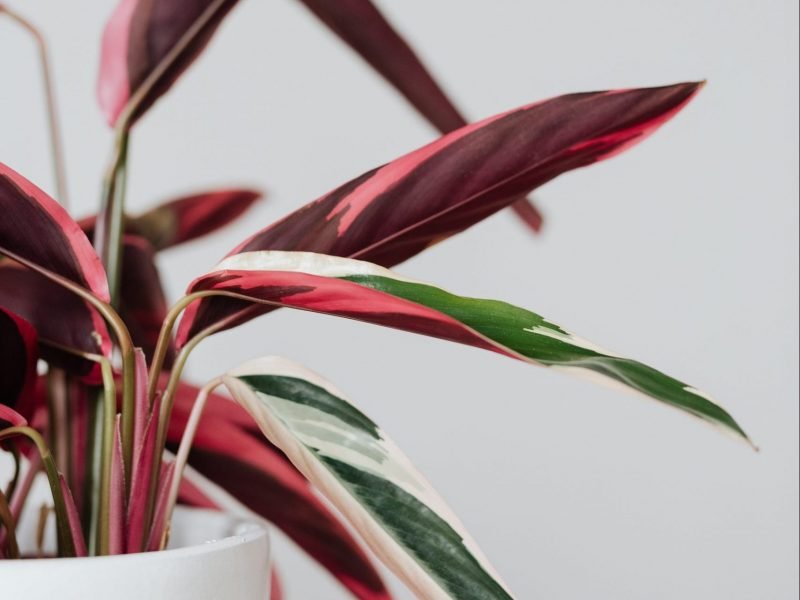Healthy Bird of Paradise

Contents
- Introduction
- Common Reasons for Yellowing Bird of Paradise Leaves
- Low light levels can cause yellow leaves
- A pest infestation causes yellow leaves
- Overwatering can also cause yellow leaves
- Natural ageing of your plant
- Avoiding Overcrowding and Choosing the Right Pot
- Pruning and Removing Yellow Leaves
- Tips for Reviving a Yellowing Bird of Paradise Plant
- Conclusion
Introduction
It’s always a bit disheartening when you see your Bird of Paradise plant starting to turn yellow. But don’t worry, this change in color doesn’t necessarily mean your tropical friend is headed for the plant graveyard.
Whether it’s due to environmental factors like lighting, irritating pests, overwatering, or just natural aging, there’s plenty you can do to help your plant bounce back.
So let’s dive in and help you figure out why your Bird of Paradise is turning yellow and what you can do about it.
Common Reasons for Yellowing Bird of Paradise Leaves
If you’re noticing that your Bird of Paradise plant is turning yellow, don’t panic.
This is a common issue that many plant owners face. Understanding the potential reasons behind this problem can help you diagnose the issue and take the appropriate measures to restore your plant’s health.
In this section, we’ll explore some of the most common causes and provide quick solutions.
| Reason | Quick Solution |
|---|---|
| Overwatering | Reduce watering frequency and ensure your pot has proper drainage. |
| Under-watering | Water your plant more frequently. Remember, this plant prefers to stay moist but not soggy. |
| Too much sunlight | Move your plant to a location with indirect sunlight. |
| Not enough sunlight | Place your plant in a brighter location, but avoid direct sunlight. |
| Nutrient deficiency | Feed your plant with a balanced fertilizer during the growing season. |
Remember, it’s crucial to monitor your plant closely after making these changes, as it might require a combination of solutions.
Low light levels can cause yellow leaves
Proper lighting is an essential factor in maintaining the healthy growth of your Bird of Paradise plant, and it’s important not to underestimate its impact.
If your Bird of Paradise is turning yellow, one of the most likely reasons could be low light levels. These tropical plants are accustomed to bright, but indirect sunlight, mimicking their natural habitat under the sun-dappled canopy of the rainforest.
Low light levels can stress the plant and lead to yellowing leaves as it struggles to perform photosynthesis.
When it comes to light levels, it’s all about balance. While your Bird of Paradise needs plenty of light, also keep in mind that direct, strong sunlight can be damaging.
This can lead to sunburn, which can also cause yellowing and browning of leaves. It’s a little like humans in this respect – just enough sun is beneficial, too much without protection can be harmful.
Here’s what you can do to address low light issues:
- Position your plant right: Place your Bird of Paradise in a spot that gets plenty of bright, indirect sunlight. East or north facing windows are often ideal.
- Use artificial light: If you don’t have a spot with enough natural light, consider using a grow light. These are special bulbs that simulate sunlight and can provide your plant with the light spectrum it needs to thrive.
- Rotate your plant: To make sure all sides of your plant get equal exposure to light, rotate it every few weeks. This can help avoid overexposure on one side and underexposure on the other.
Remember, changes should be made gradually. Sudden changes in light levels can stress your plant.
Monitor your Bird of Paradise carefully after making any changes, and be patient – it may take some time for your plant to adjust and recover.
A pest infestation causes yellow leaves
Unfortunately, your Bird of Paradise plant may be playing host to unwanted guests.
Various pests such as spider mites, aphids, and mealybugs are known to target these exotic plants. These tiny invaders feed on the plant’s sap, causing damage which often results in yellowing leaves.
Spider mites are tiny arachnids that are almost invisible to the naked eye. They especially flourish in dry, warm conditions. If you notice small, yellow spots on your plant’s leaves, it could signal a spider mite infestation.
Aphids are small, green insects that are notorious for infesting house plants. They suck sap from the plant, leading to yellow, distorted leaves. They’re often found on the underside of leaves or near new growth.
Mealybugs appear as tiny, white, cottony spots on the leaves and stems of your plant. They feed by sucking sap from the plant, causing yellowing and wilting leaves.
To confirm the presence of pests, you’ll need to do a little detective work.
Check the undersides of the leaves and the joints where the leaves meet the stem. Spider mites leave behind a telltale webbing, while aphids and mealybugs are visible as small, discolored spots.
If you discover that pests are the cause of your Bird of Paradise’s yellow leaves, don’t panic.
There are several effective methods for dealing with these common plant pests. Insecticidal soaps or a solution of water and mild dish soap can be used to wash your plant, effectively removing and killing the pests.
For more severe infestations, you might need to use a stronger pesticide. Always remember to isolate the infested plant from your other plants to prevent the pests from spreading.
Overwatering can also cause yellow leaves
One of the most common mistakes plant owners make, especially with the lush Bird of Paradise, is overwatering. Overwatering can lead to yellowing leaves, a clear sign of distress in your plant.
When a Bird of Paradise receives too much water, the roots become waterlogged and oxygen-starved. This lack of aeration can lead to root rot, a dangerous condition that can harm the plant’s overall health.
The first visible symptoms of this condition often appear on the leaves, turning them a sickly yellow color.
If the roots are consistently waterlogged, the leaves may not only turn yellow but could also become limp or wilted.
So, how can you tell if overwatering is the problem? Well, besides yellow leaves, another tell-tale sign is the presence of brown spots, generally surrounded by a yellow halo. This is a symptom of a fungal infection, a common result of overwatering.
The best way to prevent overwatering is to follow a strict watering regimen. The Bird of Paradise prefers its soil to dry out a little between waterings.
This doesn’t mean wait until the soil is bone dry, but rather until the top inch or so of the soil feels dry to the touch. Then, when you do water, ensure the water drains out the bottom of the pot.
This will help to prevent water from sitting in the pot, which can lead to root rot.
How to fix overwatering
If you suspect your Bird of Paradise has been overwatered, don’t despair!
There are ways to remedy this situation. Firstly, allow the plant’s soil to dry out completely before watering again. If the plant is severely overwatered, you may need to repot it into fresh, dry soil.
Prune away any yellow leaves to encourage new growth. Over time, with careful watering, your Bird of Paradise should return to its vibrant, healthy self.
Natural ageing of your plant
It’s entirely normal for older leaves to turn yellow, then brown, before finally falling off.
This is the plant’s natural way of cycling out older growth to make way for fresh, new leaves. Don’t if panic you see a few yellow leaves here and there – it’s a natural process that occurs over time.
However, it’s important to keep an eye on the pattern of the yellowing. If the yellowing begins on older, lower leaves but eventually spreads upward to newer growth, that typically indicates a natural ageing process.
On the other hand, if the newer, upper leaves are turning yellow first, this might be a sign of a different problem such as-overwatering, inadequate lighting, or a pest infestation.
You don’t need to do anything about the natural yellowing associated with age. But, it’s a great opportunity to assess the overall health of your plant.
Make sure it’s getting the care it needs in terms of light, water, and nutrients. If you’re unsure, review the earlier sections of this article where we covered these aspects in detail.
Also, remember to gently remove the yellowing leaves once they’ve completely turned brown. This not only keeps your plant looking its best, but also helps prevent the potential spread of disease or pests.
Avoiding Overcrowding and Choosing the Right Pot
If your Bird of Paradise plant has begun to turn yellow, one of the issues could be overcrowding or not having the right pot size.
Both of these issues can stunt the growth of your plant and cause the leaves to turn yellow. Let’s consider each problem in turn and provide some solutions.
Avoiding Overcrowding
When a Bird of Paradise plant is placed too close to other plants, it can suffer from a lack of necessary nutrients, water, and light, leading to yellowing leaves.
This plant is known to spread its leaves wide to capture sunlight, and when it’s crowded, the leaf spread is limited. Additionally, crowded roots can limit the plant’s ability to absorb water and nutrients from the soil.
It’s like being at a crowded party where there isn’t enough food to go around – your plant ends up hungry, thirsty, and stressed.
Tip: Make sure your Bird of Paradise plant has plenty of space. It should be positioned far enough away from other plants that its leaves can spread out fully in every direction.
Choosing the Right Pot
The pot you choose plays a significant role in the health of your Bird of Paradise plant.
A pot that’s too small can cramp the plant’s roots, leading to poor water and nutrient absorption, ultimately causing the leaves to yellow. On the other hand, a pot that’s too large can lead to overwatering, as the soil will hold onto more water than the plant can use.
Your pot should also have proper drainage holes. Without them, excess water cannot escape, leading to waterlogged soil and, you guessed it, yellow leaves.
Tip: Choose a pot that is just slightly larger than the root ball of your plant. This gives the roots enough room to grow, but not so much that your plant risks being overwatered. Make sure your pot has drainage holes at the bottom to allow excess water to escape.
Flowering Bird of Paradise

Pruning and Removing Yellow Leaves
Pruning and removing yellow leaves from your Bird of Paradise plant is an essential part of maintaining its health and vibrancy.
This practice not only helps to improve the overall appearance of the plant but also prevents the spread of disease and enables the plant to focus its energy on new growth.
But how do you go about this without causing further harm to your beloved plant?
How to Prune your Bird of Paradise Plant
Pruning a Bird of Paradise is not as intimidating as it may seem. First, you’ll need a pair of sharp, clean pruning shears. Ensure they’re sterilized to prevent introducing any unwanted diseases.
Follow these steps:
- Identify the leaves that are yellowing or brown. These are the leaves you’ll want to remove. Leaves that are just beginning to yellow at the tips can be trimmed to remove only the yellowing portion.
- Cut the leaf at the base where it emerges from the main stem. Make your cut at an angle, as this allows water to drain off and not pool, which can promote disease.
- Dispose of the removed leaves properly to prevent any possible disease spread.
When to Remove Yellow Leaves
Timing is crucial when it comes to removing yellow leaves from your Bird of Paradise. If a leaf is just starting to turn yellow, you might not have to remove it entirely.
Sometimes, the plant can recover if the issue causing the discoloration is resolved quickly. However, if a leaf is mostly yellow or brown, it’s best to remove it to prevent further stress on the plant.
Remember, always be gentle when pruning your Bird of Paradise. The plant’s health is paramount, so avoid causing unnecessary damage.
With the right approach, your Bird of Paradise will be back to its vibrant self in no time.
Tips for Reviving a Yellowing Bird of Paradise Plant
Now that we’ve covered the common issues causing your Bird of Paradise plant to turn yellow, it’s time to discuss some actionable tips to help revive your plant to its former glory.
Remember, patience and consistent care are key when it comes to nurturing your plant back to health.
Balance the Light
First off, ensure your plant is getting the right balance of light. Too much direct sunlight can scorch the leaves, causing them to yellow and curl, while too little light will lead to slow growth and yellowing leaves. A spot that offers bright, indirect light is ideal for your Bird of Paradise.
Regulate Watering
Next, regulate your watering routine. Overwatering is a common cause of yellowing leaves. It’s best to water your plant when the top inch of soil is dry.
Make sure to empty the saucer of any standing water to prevent root rot. Conversely, underwatering can also cause leaves to yellow.
So, it’s essential to find a watering balance that suits your specific plant.
Inspect for Pests
Do a regular pest inspection. If you find pests, treat your plant immediately. Neem oil is a natural solution that can deter a wide range of common indoor plant pests.
Remember to isolate the affected plant to prevent the pests from spreading to your other plants.
Check the Pot Size
Check if your plant has outgrown its pot. A pot that’s too small can impede your plant’s growth and cause yellowing leaves.
When repotting, choose a pot that’s 2-3 inches larger in diameter than the current one. Ensure the new pot has sufficient drainage holes to prevent waterlogging.
Provide Proper Nutrition
Lastly, provide your plant with proper nutrition. If your Bird of Paradise isn’t getting enough nutrients, its leaves might turn yellow.
A slow-release, balanced fertilizer applied during the growing season can help provide the necessary nutrients to your plant.
Conclusion
The Bird of Paradise plant can be a bit demanding, but it’s well worth the effort.
Yellowing leaves can be a sign of various issues, from low light levels and pest infestations to overwatering, overcrowding, or even just natural aging.
The key is to keep an eye on your plant and respond to any changes as soon as you spot them.
Remember to provide your Bird of Paradise with enough light, but not too much direct sunlight. Water it regularly but avoid overwatering. Be vigilant about pests and take action at the first sign of infestation.
And don’t forget about the importance of the right size pot and proper nutrition for your plant’s wellbeing.
And if you’re still having trouble figuring out why your Bird of Paradise’s leaves are turning yellow, don’t hesitate to seek professional advice.
With the right care, your Bird of Paradise can thrive and keep your space looking tropical and vibrant.















